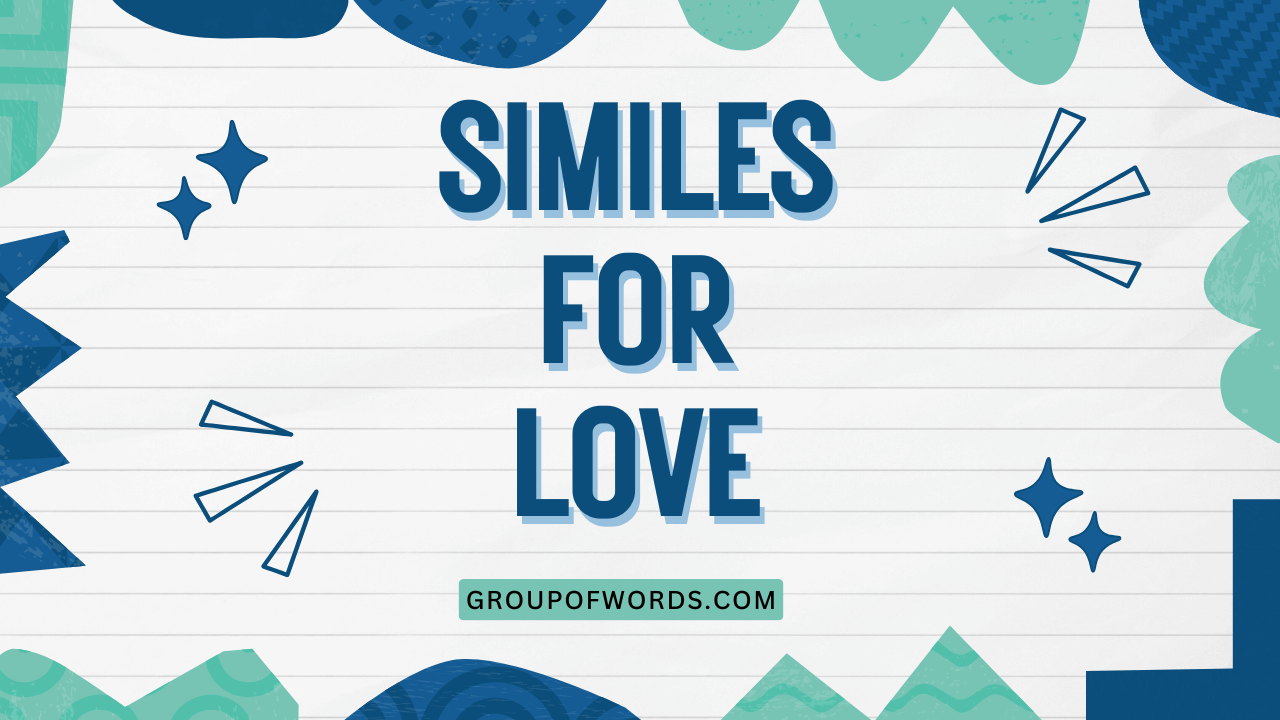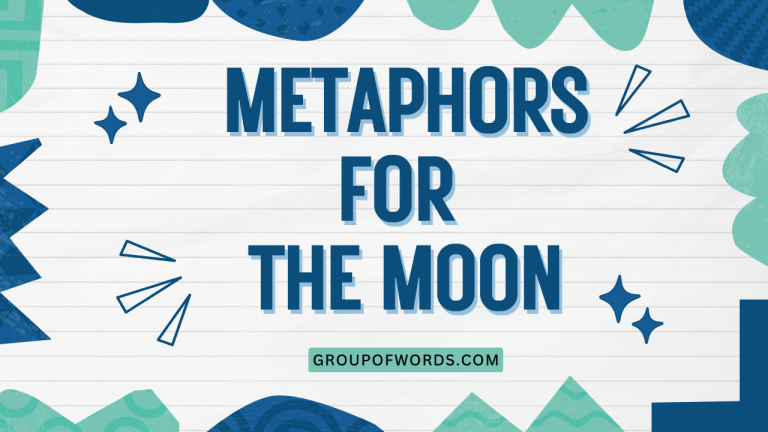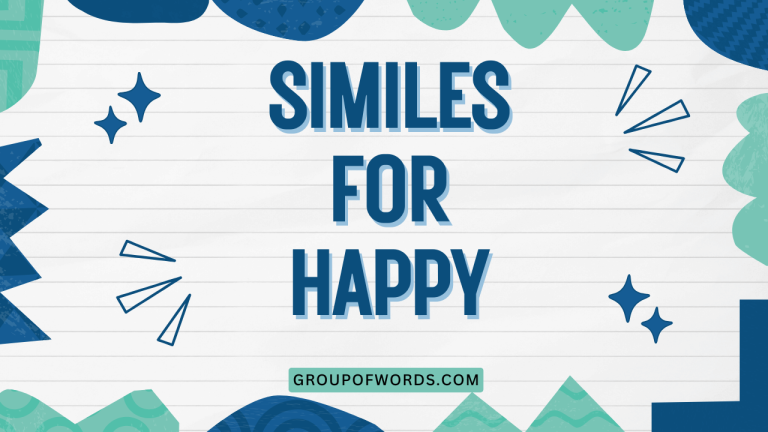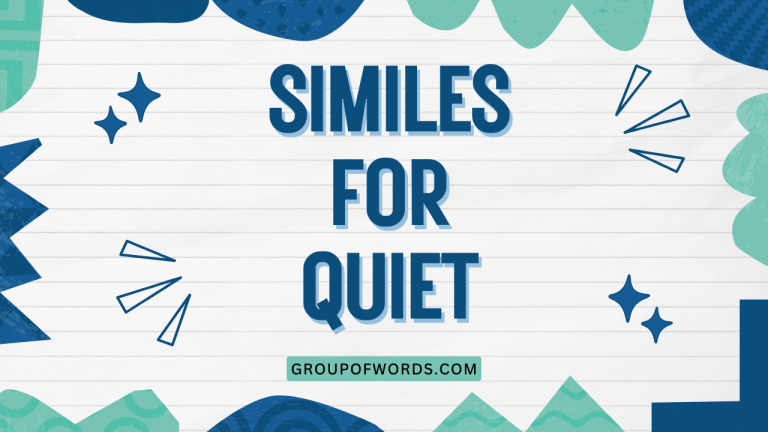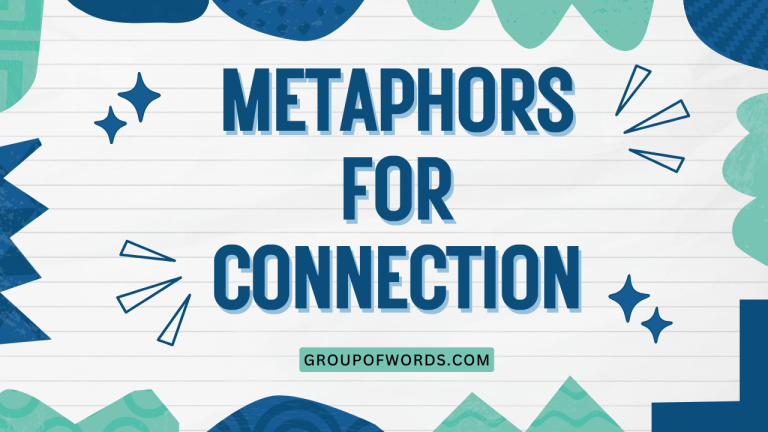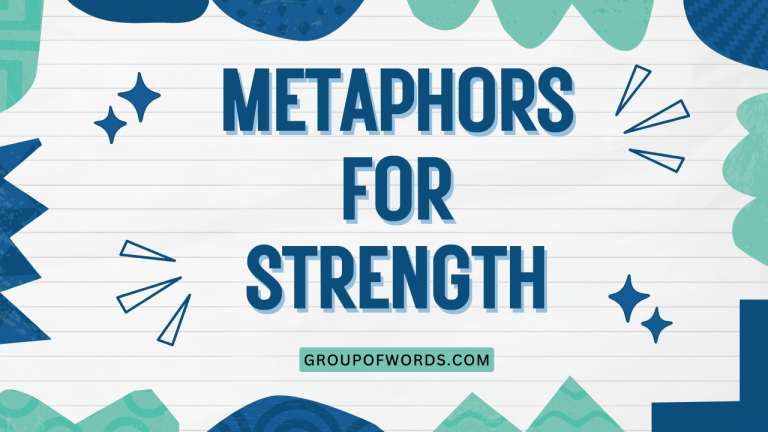Love’s Lexicon: Mastering Similes to Express Affection
Love, an emotion as profound as it is universal, often defies simple explanation. To capture its essence, we turn to the power of language, specifically similes.
Understanding and using similes effectively allows us to articulate the nuances of love, from its gentle warmth to its all-consuming fire. This article delves into the world of similes for love, exploring their structure, types, usage, and common pitfalls.
Whether you’re a student, a writer, or simply someone seeking to better express their feelings, this guide will equip you with the tools to craft vivid and evocative descriptions of love.
This article is designed for English language learners, writers, and anyone interested in expanding their vocabulary and improving their descriptive writing skills. By the end of this guide, you’ll be able to identify, analyze, and create similes that capture the multifaceted nature of love, enriching your communication and creative expression.
Table of Contents
- Definition of Simile
- Structural Breakdown of a Simile
- Types of Similes for Love
- Examples of Similes for Love
- Usage Rules for Similes
- Common Mistakes with Similes
- Practice Exercises
- Advanced Topics: Metaphors and Beyond
- Frequently Asked Questions
- Conclusion
Definition of Simile
A simile is a figure of speech that directly compares two different things using the words “like” or “as.” The purpose of a simile is to create a vivid image or a deeper understanding of one thing by associating it with another. In the context of love, similes are used to describe the feeling, the person, or the experience of love by comparing it to something else that shares similar qualities.
Similes are crucial in descriptive writing because they enhance imagery and evoke emotions. They allow writers and speakers to go beyond literal descriptions and create a more engaging and relatable experience for the audience.
By drawing comparisons to familiar objects, experiences, or concepts, similes make abstract ideas like love more concrete and understandable.
Consider these key aspects of a simile:
- Comparison: It explicitly compares two unlike things.
- Connecting Words: It uses “like” or “as” to make the comparison.
- Shared Quality: The two things being compared share a common characteristic or quality.
Structural Breakdown of a Simile
Understanding the structure of a simile is essential for creating effective and meaningful comparisons. A simile typically consists of three main components: the subject, the connecting word, and the object of comparison.
- The Subject: This is the thing being described or compared. In the context of love, the subject could be the feeling of love itself, a person who is loved, or an aspect of the relationship.
- The Connecting Word: This is the word that establishes the comparison. The most common connecting words are “like” and “as.”
- The Object of Comparison: This is the thing that the subject is being compared to. The object of comparison should share a quality or characteristic with the subject.
Here’s a breakdown with examples:
| Component | Description | Example |
|---|---|---|
| Subject | The thing being described (e.g., love) | Her love |
| Connecting Word | The word that makes the comparison (like/as) | as |
| Object of Comparison | The thing being compared to (e.g., a warm fire) | a warm fire |
| Complete Simile | All components combined | Her love is as warm as a fire. |
Let’s analyze another example: “His heart beats like a drum when she’s near.” In this case, “His heart” is the subject, “beats like” is the connecting phrase, and “a drum” is the object of comparison. The shared quality is the rhythmic, intense sound.
By understanding these components, you can construct similes that effectively convey the nuances of love and create powerful imagery in your writing and speech. The key is to choose objects of comparison that resonate with the intended meaning and evoke the desired emotions.
Types of Similes for Love
Similes for love can be categorized based on the specific aspect of love they aim to describe. These categories include:
Similes Describing the Feeling of Love
These similes focus on the emotional experience of being in love. They capture the sensations, emotions, and psychological effects of love.
Similes Describing the Person You Love
These similes focus on the qualities, characteristics, and impact of the person who is the object of your affection. They highlight what makes that person special and how they affect you.
Similes Describing the Relationship
These similes focus on the dynamics, qualities, and experiences within the relationship itself. They describe the connection between two people and the nature of their bond.
Similes Describing the Intensity of Love
These similes emphasize the depth, strength, and power of love. They convey the idea that love is a profound and transformative force.
Examples of Similes for Love
Here are numerous examples of similes for love, organized by the categories mentioned above. Each example aims to provide a clear and evocative description of love.
Examples Describing the Feeling of Love
This table presents similes that focus on the emotional experience of love, capturing its various sensations and psychological effects.
| Simile | Explanation |
|---|---|
| Love feels like a warm blanket on a cold winter night. | Describes the comforting and secure feeling of love. |
| Being in love is like floating on a cloud. | Conveys the lightness and joy of being in love. |
| Love is as sweet as honey. | Highlights the delightful and pleasurable aspect of love. |
| Her laughter sounds like music to my ears when I’m with her. | Emphasizes the joy and pleasure derived from hearing a loved one’s laughter. |
| His presence is like a calm sea after a storm. | Suggests a sense of peace and tranquility brought by the loved one. |
| Love is as addictive as chocolate. | Highlights the irresistible and consuming nature of love. |
| My heart feels like a hummingbird’s wings when I see her. | Conveys the rapid, excited beating of the heart in the presence of a loved one. |
| Love is like a gentle breeze on a hot day. | Describes the refreshing and soothing quality of love. |
| Being with him is like coming home after a long journey. | Conveys the comfort and security found in a loving relationship. |
| Love is as bright as the morning sun. | Highlights the hope and optimism that love brings. |
| Her eyes shine like stars when she talks about her passions. | Emphasizes the brightness and excitement in a loved one’s eyes. |
| Love is like a rollercoaster, full of ups and downs. | Acknowledges the exciting but sometimes turbulent nature of love. |
| His touch is as soft as a feather. | Describes the gentle and delicate nature of physical affection. |
| Love is like a beautiful dream you never want to wake up from. | Highlights the blissful and captivating nature of love. |
| Her voice is like a soothing melody. | Conveys the calming and pleasant effect of a loved one’s voice. |
| Love is as powerful as a hurricane. | Emphasizes the overwhelming and transformative force of love. |
| My love for you is like the never-ending ocean. | Conveys the vastness and boundlessness of love. |
| His smile is like a ray of sunshine on a cloudy day. | Highlights the happiness and warmth that a loved one’s smile brings. |
| Love is like a garden that needs constant care. | Emphasizes the need for nurturing and attention in a relationship. |
| Being in love feels like finally finding a missing piece of yourself. | Conveys the sense of completion and wholeness that love brings. |
| Her love is like a lighthouse in a storm. | Highlights the guiding and protective nature of love. |
| His love is as strong as an oak tree. | Emphasizes the enduring and resilient nature of love. |
Examples Describing the Person You Love
This table presents similes that focus on the qualities and characteristics of the person who is loved.
| Simile | Explanation |
|---|---|
| She is as radiant as the sun. | Describes her beauty and warmth. |
| He is as strong as an ox. | Highlights his physical or emotional strength. |
| Her mind is like a steel trap. | Emphasizes her intelligence and sharp wit. |
| His laughter is like a contagious melody. | Highlights the uplifting and infectious nature of his laughter. |
| She is as graceful as a swan. | Conveys her elegance and poise. |
| He is as reliable as the sunrise. | Emphasizes his dependability and consistency. |
| Her spirit is like a free bird. | Highlights her independence and freedom. |
| His heart is as big as the ocean. | Conveys his generosity and compassion. |
| She is as wise as an owl. | Highlights her knowledge and insight. |
| He is as brave as a lion. | Emphasizes his courage and fearlessness. |
| Her smile is like a blooming flower. | Conveys the beauty and joy of her smile. |
| He is as gentle as a lamb. | Highlights his kindness and tenderness. |
| Her voice is like a silver bell. | Describes the clarity and beauty of her voice. |
| He is as steady as a rock. | Emphasizes his stability and supportiveness. |
| Her eyes are like sparkling gems. | Highlights the beauty and brilliance of her eyes. |
| He is as charming as a prince. | Conveys his charisma and attractiveness. |
| She is as vibrant as a rainbow. | Highlights her energy and colorful personality. |
| He is as patient as a saint. | Emphasizes his tolerance and understanding. |
| Her touch is like a magic spell. | Conveys the enchanting and transformative effect of her touch. |
| He is as loyal as a dog. | Highlights his faithfulness and devotion. |
| She is as sweet as sugar. | Describes her kindness and pleasantness. |
| He is as quick as a fox. | Emphasizes his intelligence and agility. |
| Her laughter is like a waterfall. | Conveys the abundance and joy of her laughter. |
Examples Describing the Relationship
This table presents similes that focus on the qualities and dynamics within the relationship itself.
| Simile | Explanation |
|---|---|
| Their love is like a well-tended garden. | Emphasizes the need for constant care and attention. |
| Their relationship is like a sturdy bridge. | Highlights the strength and support they provide each other. |
| Their connection is as deep as the ocean. | Conveys the profound and meaningful bond they share. |
| Their love is like a dance, each leading and following. | Emphasizes the balance and cooperation in the relationship. |
| Their arguments are like summer storms, intense but brief. | Acknowledges conflicts while highlighting their temporary nature. |
| Their love is like a comfortable silence. | Conveys the ease and understanding they share. |
| Their relationship is like a fine wine, improving with age. | Highlights the growth and enrichment of their love over time. |
| Their bond is as strong as steel. | Emphasizes the resilience and durability of their connection. |
| Their love is like a puzzle, each piece fitting perfectly. | Conveys the sense of completeness and compatibility. |
| Their relationship is like a shared adventure. | Highlights the excitement and exploration they experience together. |
| Their laughter together is like a symphony. | Conveys the harmony and joy they find in each other’s company. |
| Their love is like a warm fire on a cold night. | Emphasizes the comfort and security they provide each other. |
| Their relationship is like a blooming garden in spring. | Highlights the growth and beauty of their love. |
| Their connection is as natural as breathing. | Conveys the ease and effortless nature of their bond. |
| Their love is like a guiding star. | Emphasizes the direction and purpose they find in each other. |
| Their relationship is like a ship sailing through calm waters. | Highlights the peace and stability of their love. |
| Their bond is as unbreakable as a diamond. | Emphasizes the strength and permanence of their connection. |
| Their love is like a melody that never ends. | Conveys the enduring and timeless nature of their affection. |
| Their relationship is like a painting, each adding their unique colors. | Highlights the individuality and collaboration in their love. |
| Their connection is as clear as a mountain stream. | Conveys the honesty and transparency of their bond. |
Examples Describing the Intensity of Love
This table presents similes that emphasize the depth, strength, and power of love.
| Simile | Explanation |
|---|---|
| My love for you is as deep as the ocean. | Conveys the vastness and boundlessness of love. |
| Her love is as strong as a fortress. | Highlights the resilience and protective nature of her love. |
| His love burns like a wildfire. | Emphasizes the passionate and consuming nature of his love. |
| Their love shines as bright as the sun. | Conveys the radiant and life-giving quality of their love. |
| My heart beats for you like a drum in a tribal dance. | Emphasizes the primal and intense nature of love. |
| Her love is as constant as the stars in the night sky. | Highlights the unwavering and dependable nature of her love. |
| His love is a powerful as a roaring river. | Conveys the unstoppable and transformative force of his love. |
| Their love is a beacon in the darkness. | Emphasizes the guiding and hopeful nature of their love. |
| My love for you is a never-ending story. | Conveys the timeless and enduring nature of love. |
| Her love is a shield against the world. | Highlights the protective and supportive quality of her love. |
| His love is a flame that never dies. | Emphasizes the eternal and passionate nature of his love. |
| Their love is a symphony of emotions. | Conveys the harmonious and complex nature of their love. |
| My love for you is an unquenchable thirst. | Emphasizes the deep longing and desire of love. |
| Her love is a force of nature. | Highlights the overwhelming and transformative power of her love. |
| His love is a gift that keeps on giving. | Conveys the generosity and abundance of his love. |
| Their love is a masterpiece in progress. | Emphasizes the ongoing creation and beauty of their love. |
| My love for you is as boundless as the universe. | Conveys the limitlessness and expanse of love. |
| Her love is a constant source of inspiration. | Highlights the motivating and uplifting quality of her love. |
| His love is a safe harbor in a stormy sea. | Emphasizes the security and comfort of his love. |
| Their love is a testament to the power of connection. | Conveys the significance and strength of their bond. |
Usage Rules for Similes
While similes are relatively straightforward, adhering to certain rules ensures their effectiveness and clarity.
- Ensure a Clear Connection: The comparison should be logical and understandable. The shared quality between the subject and the object of comparison must be evident. For example, “Her love is like a brick wall” is not as effective as “Her love is like a warm hearth,” because warmth is a more commonly associated positive attribute of love than the rigid, isolating imagery of a brick wall.
- Avoid Clichés: Overused similes can sound unoriginal and lack impact. Try to create fresh and unique comparisons. Instead of saying “Love is like a rose,” which is a common cliché, consider something like “Love is like a newly discovered star, rare and illuminating.”
- Maintain Consistency: Ensure the simile aligns with the overall tone and style of your writing. A simile that is too casual or humorous might be out of place in a serious or formal context.
- Use Sparingly: While similes can enhance writing, overusing them can make your prose feel cluttered and artificial. Use them strategically to emphasize key points and create memorable images.
Common Mistakes with Similes
Even experienced writers can sometimes make mistakes when using similes. Here are some common errors to avoid:
| Mistake | Incorrect Example | Correct Example | Explanation |
|---|---|---|---|
| Illogical Comparison | Her love is like a refrigerator. | Her love is like a warm blanket. | A refrigerator doesn’t have an obvious connection to the positive feelings associated with love, while a warm blanket does. |
| Cliché Usage | My love is like a rose. | My love is like a hidden spring in the desert. | “Like a rose” is overused, while “a hidden spring in the desert” is more original and evocative. |
| Mixed Metaphor/Simile | His love is a roaring fire, like a gentle breeze. | His love is like a roaring fire. | Mixing a metaphor (“roaring fire”) with a simile (“like a gentle breeze”) creates a confusing image. |
| Unclear Referent | Love is as important. | Love is as important as air to breathe. | The original sentence lacks a clear object of comparison, making it incomplete and confusing. |
Practice Exercises
Test your understanding of similes with these exercises. Fill in the blanks to complete the similes, or create your own similes based on the prompts.
Exercise 1: Completing Similes
Complete the following similes with appropriate comparisons.
| Question | Answer |
|---|---|
| 1. Her love is as bright as _____. | Her love is as bright as the morning sun. |
| 2. His smile is like _____. | His smile is like a ray of sunshine. |
| 3. Their relationship is like _____. | Their relationship is like a well-tended garden. |
| 4. My heart beats like _____ when I see her. | My heart beats like a drum when I see her. |
| 5. Love is as sweet as _____. | Love is as sweet as honey. |
| 6. Being with him is like _____. | Being with him is like coming home. |
| 7. Her voice is like _____. | Her voice is like a soothing melody. |
| 8. His touch is as soft as _____. | His touch is as soft as a feather. |
| 9. Their bond is as strong as _____. | Their bond is as strong as steel. |
| 10. Love feels like _____. | Love feels like a warm embrace. |
Exercise 2: Creating Similes
Create your own similes based on the following prompts.
| Prompt | Example Answer |
|---|---|
| 1. Describe the feeling of love using a simile. | Love feels like floating on a cloud, light and carefree. |
| 2. Describe the person you love using a simile. | She is as radiant as the sun, bringing light to my life. |
| 3. Describe a loving relationship using a simile. | Their relationship is like a sturdy bridge, connecting two souls. |
| 4. Describe the intensity of love using a simile. | My love for you is as deep as the ocean, endless and vast. |
| 5. Describe the joy of being in love using a simile. | Being in love is like a beautiful dream you never want to wake up from. |
| 6. Describe the comfort of love using a simile. | Love is like a warm blanket on a cold winter night, providing solace and security. |
| 7. Describe the growth of love using a simile. | Their love is like a fine wine, improving with age and becoming more exquisite. |
| 8. Describe the challenges of love using a simile. | Love is like a rollercoaster, full of thrilling highs and challenging lows. |
| 9. Describe the support found in love using a simile. | Their love is like a solid foundation, providing unwavering support. |
| 10. Describe the hope that love brings using a simile. | Love is like a guiding star, illuminating the path forward. |
Advanced Topics: Metaphors and Beyond
While similes explicitly compare two things using “like” or “as,” metaphors make an implicit comparison, stating that one thing *is* another. Understanding the difference between similes and metaphors is crucial for advanced writing.
For example:
- Simile: “Her love is like a warm fire.” (explicit comparison)
- Metaphor: “Her love is a warm fire.” (implicit comparison)
Metaphors can be more powerful than similes because they create a direct association, suggesting a deeper connection between the two things being compared. However, they also require more careful crafting to avoid confusion or mixed metaphors.
Beyond similes and metaphors, other figures of speech can also be used to describe love, such as:
- Personification: Giving human qualities to inanimate objects or abstract ideas (e.g., “Love smiled upon them”).
- Hyperbole: Exaggerating for emphasis or effect (e.g., “I would cross oceans for your love”).
- Understatement: Downplaying something for ironic effect (e.g., “Our love is a little bit special”).
By mastering these various figures of speech, you can create rich and nuanced descriptions of love that resonate with your audience and elevate your writing.
Frequently Asked Questions
Here are some common questions about similes and their usage in describing love.
- What is the difference between a simile and a metaphor?
A simile uses “like” or “as” to make an explicit comparison between two things, while a metaphor states that one thing *is* another, creating an implicit comparison. Similes are generally more direct and less figurative than metaphors, which invite a deeper level of interpretation.
- How can I avoid using clichés when creating similes for love?
To avoid clichés, brainstorm unique and unexpected comparisons. Think about specific qualities of love you want to describe and then find objects or experiences that share those qualities in a less obvious way. Use vivid imagery and sensory details to make your similes more engaging and original. For example, instead of “love is like a rose,” try “love is like a hidden spring in the desert, refreshing and life-giving.”
- Can I use similes in formal writing?
Yes, similes can be used in formal writing, but they should be used sparingly and with careful consideration of the tone and audience. In formal contexts, it’s important to choose similes that are sophisticated and contribute to the overall message without sounding overly sentimental or informal. The key is to maintain a balance between imagery and clarity.
- How do I choose the right object of comparison for a simile about love?
The best object of comparison will depend on the specific aspect of love you want to highlight. Consider the qualities, emotions, or experiences you want to convey and then brainstorm objects or concepts that share those characteristics. Think about sensory details (sight, sound, smell, taste, touch) to create a more vivid and relatable image. For example, if you want to describe the comforting nature of love, you might compare it to a warm blanket or a cozy fireplace.
- What if my simile doesn’t make sense to the reader?
If your simile is confusing or doesn’t resonate with the reader, it may be because the connection between the subject and the object of comparison is not clear. Make sure the shared quality is evident and that the comparison is logical. Consider providing additional context or explanation to help the reader understand the intended meaning. If the simile still doesn’t work, it may be best to revise or replace it with a more effective comparison.
- Is it okay to use multiple similes in a single piece of writing?
Yes, it is acceptable to use multiple similes, but moderation is key. Overusing similes can make your writing feel cluttered and artificial. Use them strategically to emphasize key points and create memorable images, but avoid overwhelming the reader with too many comparisons. Focus on quality over quantity.
- How can I make my similes more creative and impactful?
To make your similes more creative, try to think outside the box and explore unconventional comparisons. Use sensory details and vivid imagery to create a strong impression on the reader. Consider using personification, hyperbole, or other figures of speech to add depth and complexity to your similes. The more unique and imaginative your comparisons, the more memorable and impactful they will be.
- What are some resources for improving my understanding of similes and other figures of speech?
There are many resources available for improving your understanding of similes and other figures of speech. Online grammar guides, writing workshops, and literature textbooks can provide valuable information and examples. Reading widely and paying attention to how skilled writers use figurative language can also help you develop your own skills. Additionally, practicing writing similes and getting feedback from others can be a great way to improve your understanding and usage.
Conclusion
Mastering the art of similes is a powerful tool for expressing the complexities of love. By understanding their structure, types, and usage rules, you can craft vivid and evocative descriptions that resonate with your audience.
Remember to avoid clichés, ensure clear connections, and use similes strategically to enhance your writing. As you continue to practice and experiment with different comparisons, you’ll develop a unique voice and style that captures the multifaceted nature of love.
The journey to becoming a skilled writer involves continuous learning and refinement. Embrace the challenge of finding new and creative ways to express your thoughts and emotions.
With dedication and practice, you’ll be able to use similes and other figures of speech to create writing that is both meaningful and memorable. Keep exploring, keep writing, and keep expressing the beautiful and complex emotion that is love.
